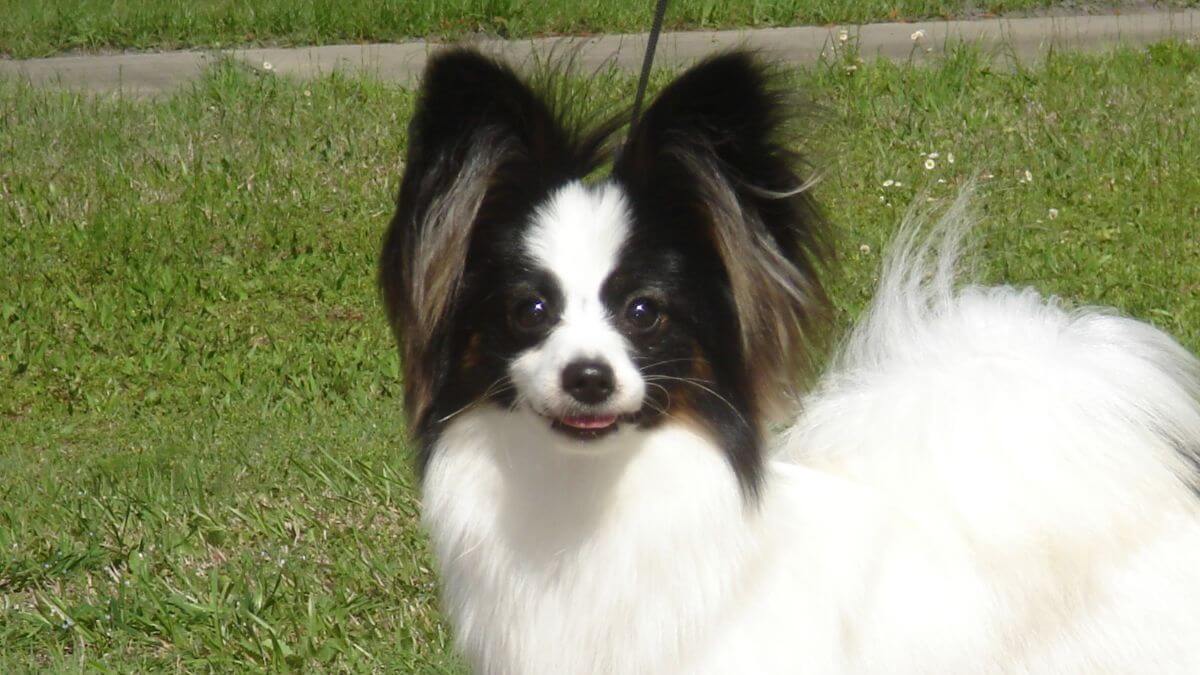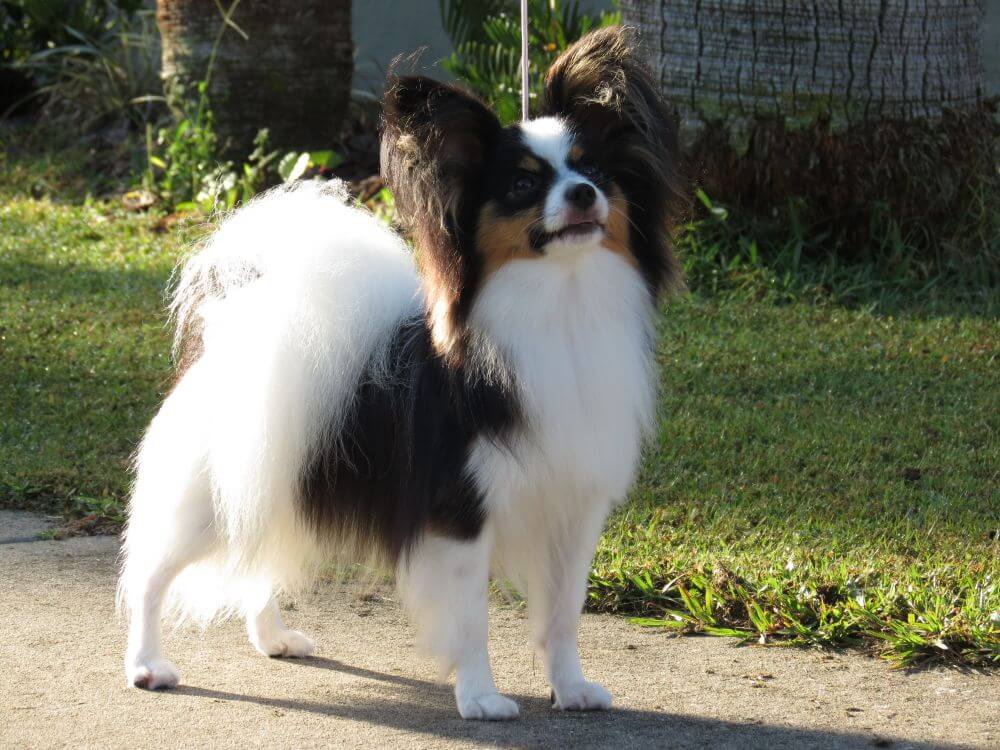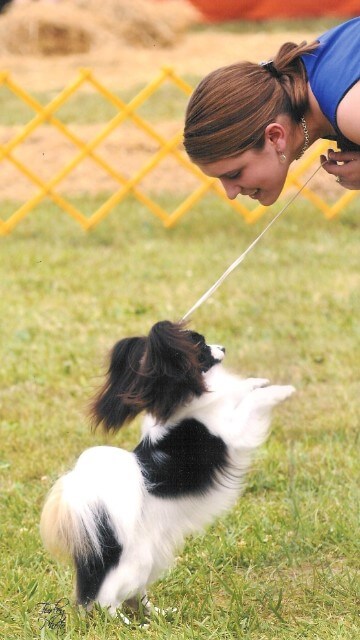
Home » ‘Papillon’ – Butterfly in French / Delightful Companion in English

Fine-boned, dainty, elegant. These three words describe a Papillon to perfection! However, a prospective owner of this delightful breed should be aware that those words do not correlate to a couch potato or a lap dog! Papillons love to play and just be a dog. Given a choice, a Papillon would much rather be running around the house chasing a ball than sitting quietly watching boring TV. They are not hyper dogs, but outgoing dogs with a fun-loving personality. They want to be the life of the party and will work the crowd if given the opportunity.
Papillons are very intelligent dogs, excelling in Obedience, Tracking, and Agility. They can also be trained to do Service Work. They are big dogs in a little package and are the “do it all” Toy dog. Most are happiest with a job to do that involves interaction with their owner. They love to please and can be trained with consistent positive reinforcement. With their intelligence, they can easily manipulate their owner to get their way. Suddenly, you will realize that you have been outsmarted by a Papillon!
The hallmark of the breed are the big, beautiful butterfly ears. The ears are large, round, and should be well fringed. When you look at a Papillon, you should never think Chihuahua! The Phalene is equally as beautiful with their dropped ears. The Papillon coat is silky, much like human hair. When you touch a Papillon coat it is cool to the touch. They should not be double-coated like a Pomeranian. Papillons are small, measuring between 8-11 inches at the withers and usually weighing 5-8 pounds.

The hallmark of the breed are the big, beautiful butterfly ears. The ears are large, round, and should be well fringed.
Papillons are a generally healthy breed. Progressive Retinal Atrophy (PRA) has been linked to Papillons; however, recently, the DNA marker was found for PRA in Papillons. A simple DNA test swab can now give a definitive diagnosis for the blinding disease on a Papillon and, more importantly, on dogs used in breeding programs. Responsible breeders are very careful not to breed dogs with a genetically linked problem in their breeding programs such as Patellar Luxation. It is imperative to work with a reputable breeder when looking for a Papillon in order to ensure a happy, healthy addition to the family. Many Papillons live active, healthy lives for 15-plus years.
Grooming a Papillon in a pet home is a relatively easy task that requires only regular baths, nail clipping, and brushing. That regime is enhanced for Papillons that are in the show ring. Dental care is very important for Papillons, as it is with all dogs—and especially Toy dogs.

The temperament of a Papillon should be happy, alert, and friendly. They have a zest for life and want to share that with their owners. They are very adaptable dogs and can be fickle. “If they can’t be with the one they love, they love the one they are with” is a general rule that Papillons live by. That being said, breeders are very careful with the placement of Papillons in homes with large dogs, as Papillons can never be convinced that they are Toy dogs. Papillons can be injured during play with a bigger dog or when they decide the other dog’s toy must be theirs! Breeders also strongly assess the placement of a Papillon in a home with small children. Children like to play with their dogs, and that interaction can prove to be too rough for a Papillon. Since Papillons are fine-boned dogs, owners must be keenly aware that certain play or activities could lead to an injury.
Papillons are not the right dogs for everyone, but for the right owners they make wonderful companions that will add joy to a home for many, many years.
